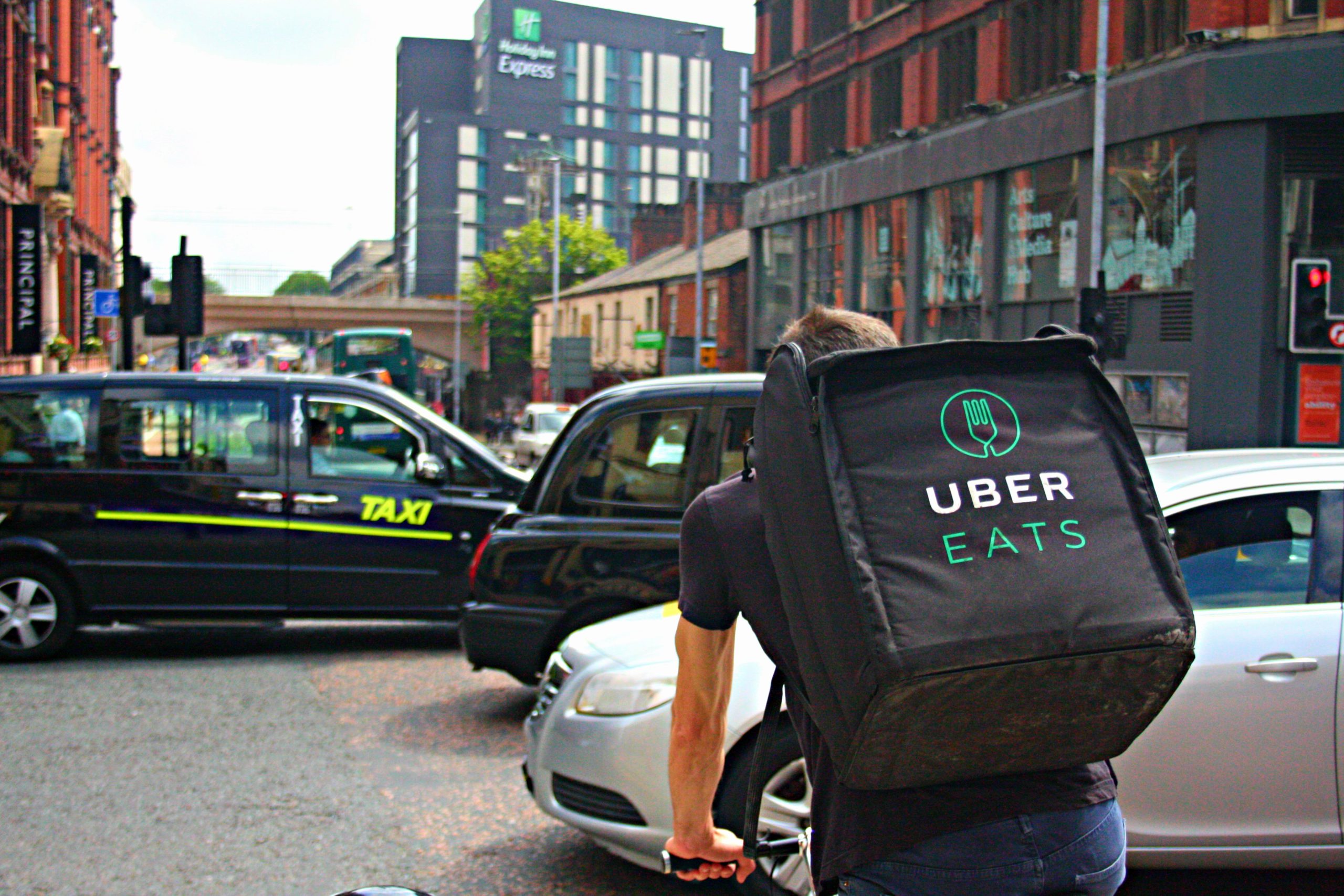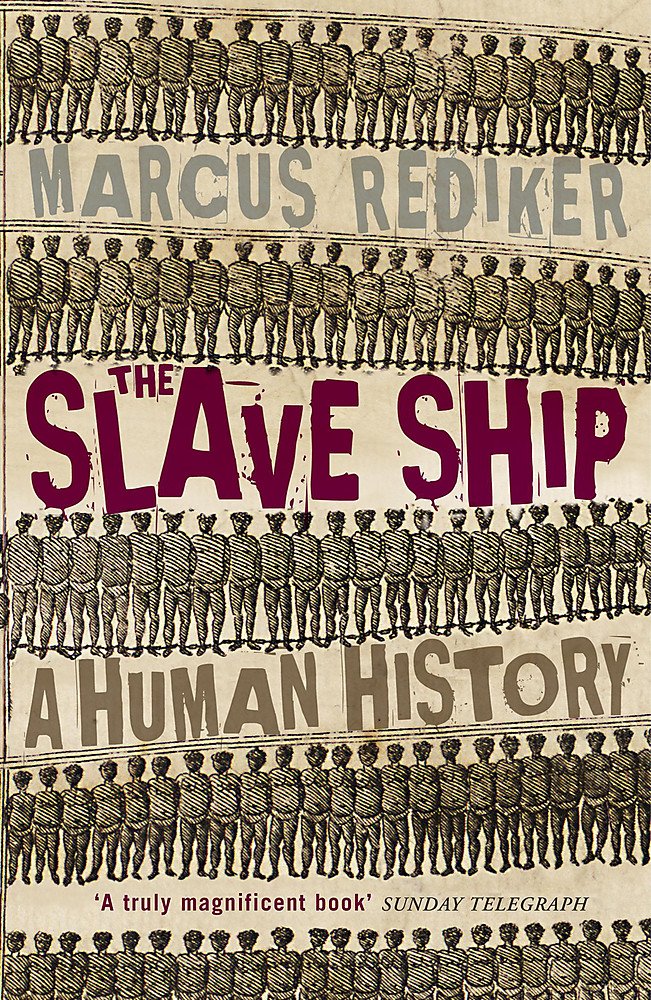I spoke with legendary scholar Marcus Rediker on studying the ‘history from below’ of pirates, slave uprisings and oppressed people. We explore how historical resistance to capitalism & the State connects to contemporary rebellion.
Asia Art Tours: In The Many-Headed Hydra you and Peter Linebaugh discuss the concept of ‘Hydrarchy’: “the organisation of the maritime state from above, and the self-organization of sailors from below . . . a maritime radical tradition that also made it a zone of freedom.
The ship became both an engine of capitalism in the wake of the bourgeois revolution in England and a setting of resistance.” Do you see commonalities between historic sailor-laborers and contemporary gig economy drivers? Do sailors delivering port-cargo and the gig workers delivering food, experience similar exploitation or discipline from capital? Do you also see potential for “piracy” or pirate-like resistance from today’s Gig Economy workers?
Marcus Rediker: I do see commonalities between sailors and mobile gig-workers. Both have irregular hours and frequently precarious employment. Both play a key role in the capitalist economy. Because of their mobility, both have found themselves historically hard to organize. When they do get organized their resistance can have disproportionate impact far beyond their numbers because of their strategic position in the division of labor.
I also see differences, the primary one being that sailors had a powerful collectivist experience and culture based on the dangers of their work, which promoted solidarity. Sailors have always had a strong occupational identity, even when their work was considered degraded and dishonored in the broader society. Gig workers usually operate solo, which means that they do not always develop horizontal bonds or feel their common strength. The future of labor struggles among both kinds of workers might depend on the development of practices and a consciousness of themselves as inter-connected “transport workers.” Land-sea linkages between such workers could produce great power to control or disrupt the circuits of global capitalism.

Asia Art Tours: In looking at Hydrarchy, did it rely on the carceral to maintain discipline, similar to the governance of land-based nation states? What did “jail” or carceral technologies look like on these ships? And do we see roots of this same carceral violence in the modern disciplining of cargo/fishing ship labor forces?
Marcus Rediker: Hydrarchy, like most everything else, needs to be looked at from both above and from below. Hydrarchy from above, which formed and maintained blue water empires within an international capitalist system, depended squarely on discipline and incarceration. The labor codes of the early modern navies of the world are legendary for their severity and gruesome array of punishments, ranging from keelhauling to hanging mutineers from the yardarm of the vessel. Labor discipline at sea has historically been violent in the extreme. One might also say that the ship itself has often served as a floating prison. This was certainly true of slave ships, where the incarceration of African bodies was central to the accumulation of labor power and eventually profits worldwide.
The same was true of naval and merchant ships, which while at sea severely curtailed the ability of workers to escape their exploitation and in a very real sense made them the prisoners of their captains. Many ships had smaller jails within the floating prison: convict ships bound from Great Britain to Australia, for example, had black boxes, not much bigger than a coffin, in which rebellious male and more frequently female convicts would be incarcerated for varying durations of time to dampen resistance and restore social order.
The slave ship was of course one huge exercise in developing carceral technologies: the use of the lower deck as a kind of prison; the stringing up of nettings around the rails of the ship to prevent the enslaved from jumping overboard to commit defiant suicide; we could go on and on. It has always struck me as significant that the real designer of the pantopticon, the prison conceived to maximize social control (made famous by Michel Foucault in Discipline and Punish), was Samuel Bentham, the more famous Jeremy’s brother. Samuel was a shipbuilder.
The future of labor struggles among both kinds of workers might depend on the development of practices and a consciousness of themselves as inter-connected “transport workers.” Land-sea linkages between such workers could produce great power to control or disrupt the circuits of global capitalism.

Asia Art Tours: Many figures who used armed struggle- Gloria Richardson, John Brown, Huey Newton – are resurfacing as heroes in contemporary US culture. How do you see the violence pirates used to resist Capitalism and the State as relevant to present day resistance?
And how do we look at the state’s response to pirates for insights into how it will respond to violence against capital property (oil pipelines, squatting, and so on) in the present?
Marcus Rediker: The pirate is the maritime version of an American, and to some extent international, folk hero: the outlaw. I drew on Eric Hobsbawm’s concept of “social bandit” to argue that the pirate might have been a criminal in the eyes of the law but appeared quite differently to ordinary working people. Authorities of the time lamented that pirates were “romantic heroes” to colonial workers at sea and ashore throughout the Americas. Pirates used counter-violence to combat and a violent system of which they themselves had been the victims, and many former sailors had the scars on their back from the cat-o’-nine-tails to prove it. Indeed many sailors turned to piracy in an effort to escape a brutal system of labor discipline at sea.
As pirate John Fly said on the gallows of Boston in 1726, just before he was hanged: “I can’t Charge myself, — I shan’t own myself Guilty of any Murder, — Our Captain and his Mate used us Barbarously. We poor Men can’t have Justice done us. There is nothing said to our Commanders, let them never so much abuse us, and use us like Dogs.” They considered their own responses to oppression to be a form of self-defense.
One might also say that the ship itself has often served as a floating prison. This was certainly true of slave ships, where the incarceration of African bodies was central to the accumulation of labor power and eventually profits worldwide.

Asia Art Tours: Beyond the material threat pirates posed to capital & state, how did their social practices threaten the atomization required to dominate citizen-laborers?
And, if it is important to fight this atomization as citizen-laborers today, what social practices from piracy should we try to emulate in our own daily life, micropolitics or organizing?
Marcus Rediker: One way to think about the pirate ship is that it was a model of and for self-organized workers, rather like the workers’ councils or soviets of a later period of working-class history. Exploited and abused wage workers came together to create a space of autonomy where they would, as one pirate put it, have “the choice in themselves” about how to organize their lives. At a time when poor people had no democratic rights whatsoever (the early 1700s), they elected their officers and limited their power. At a time of extreme inequality they divided their loot and resources in stunningly egalitarian ways.
These practices were direct and subversive attacks on how merchant and naval ships operated – and the ruling classes of the Atlantic immediately understood them as such. In response the rulers hanged several hundred pirates and strapped their corpses in chains at the oceanic entrance to port cities in a deliberate effort to terrorize common sailors and prevent them from joining the pirates when their ships were captured at sea. The was a conscious campaign to pulverize the collective autonomous space the pirates had built.
Pirates had a lot of good ideas about how to build an alternative social order. Your readers may find all of them in my book Villains of All Nations: Atlantic Pirates in the Golden Age (2004). They practiced democracy and equality as mentioned above. The created a dual executive, establishing the quartermaster as equal in power to the captain (who was also elected) and charged to keep an eye on him to prevent an abuse of power. The quartermaster, usually the most trusted man on the ship, was something of a “tribune of the people.”
Pirates also built a miniature welfare state aboard the ship to care for anyone injured in their line of work. They practiced solidarity by liberating people stuck in horrible jobs. When they were preparing to go back to sea after a rowdy shoreside celebration of a successful voyage, they would buy up the contracts of indentured servants and invite them to come along. Pirates were innovators in the long history of democratic and egalitarian ideals, yet their names, ideas, and practices never appear in the books of political theory.
One way to think about the pirate ship is that it was a model of and for self-organized workers, rather like the workers’ councils or soviets of a later period of working-class history. Exploited and abused wage workers came together to create a space of autonomy where they would, as one pirate put it, have “the choice in themselves” about how to organize their lives.

Asia Art Tours: Lastly, How does The Many-Headed Hydra help us to rethink questions of class and protest?
Marcus Rediker: For decades the prevailing interpretations of labor history centered on the white male artisan or factory worker in a national context, in histories of the English, American, or French working class beginning in the 1830s. The Many-Headed Hydra offered a different view, seeing the proletariat as something much bigger, broader, and older: it was composed of men, women, and children, waged and unwaged, formally free and enslaved, whose labors created a system of Atlantic capitalism beginning in the early seventeenth century, long before the factory and beyond the boundaries of the nation-state.
The hydra was not only a metaphor but a concept. It allowed us to conceive class in a different way by exploring connections among a large and varied group of workers, heterogeneity within unity, across the Atlantic commons. We saw the “motley crew” as a revolutionary force. The multi-ethnic working-class of the past, or the many heads of the hydra, look a lot like the working class today. The militant protests that arose around the world after the murder of George Floyd have a long and inspiring history.
I am working on a new project these days about the contemporary hydra, another transnational history from below, entitled “Hydra Rising!” A team of scholar-activists, including Nandita Sharma, Bridget Anderson, Cynthia Wright, Pia Klemp, and Peter Linebaugh, will explore the experience and mobile politics of the migrant worker and her challenge to the Herculean power of global capitalism. People in motion, defying the powers-that-be by crossing state boundaries by land and by sea, are among the most important history-makers of our time.

For more w. Dr. Rediker, please visit Marcusrediker.com. He is also on Twitter: @MarcusRediker
